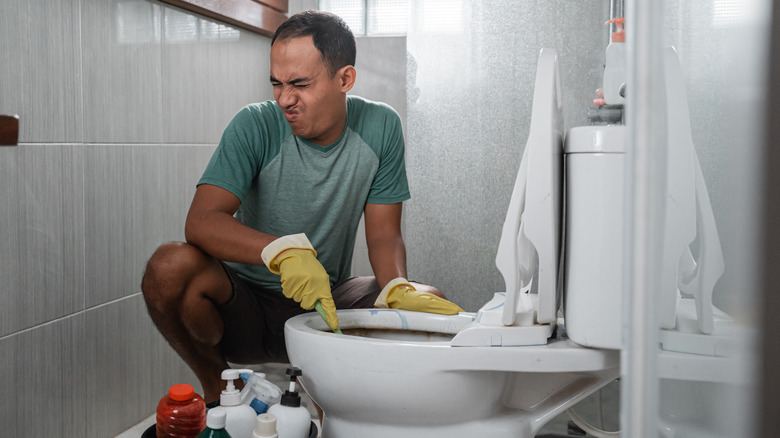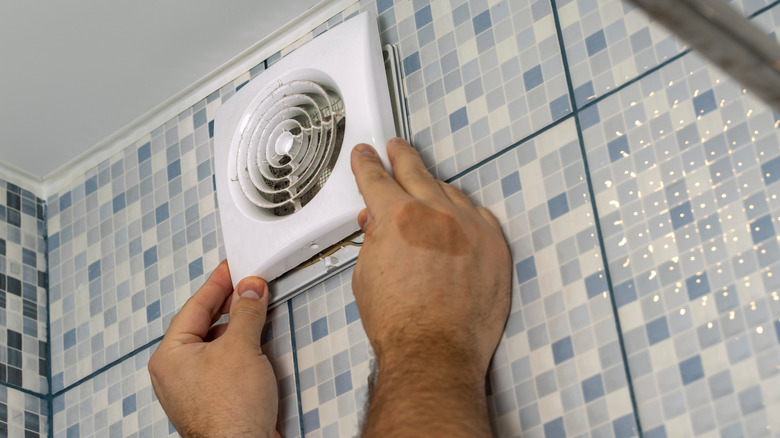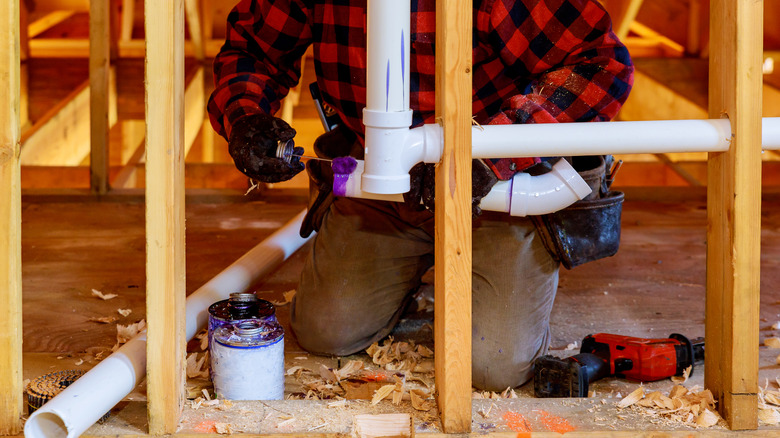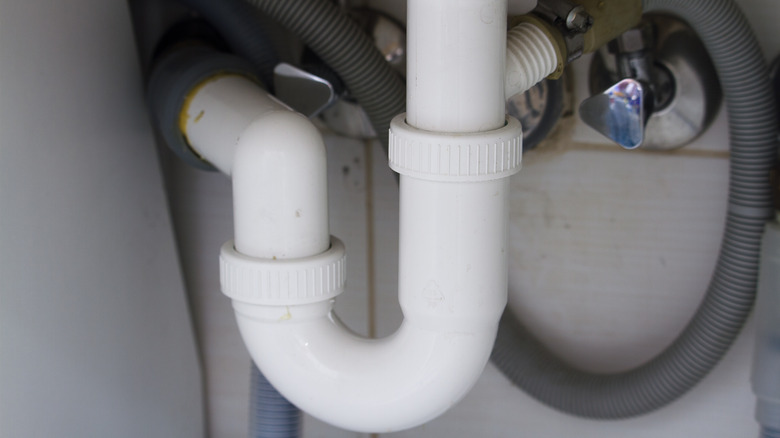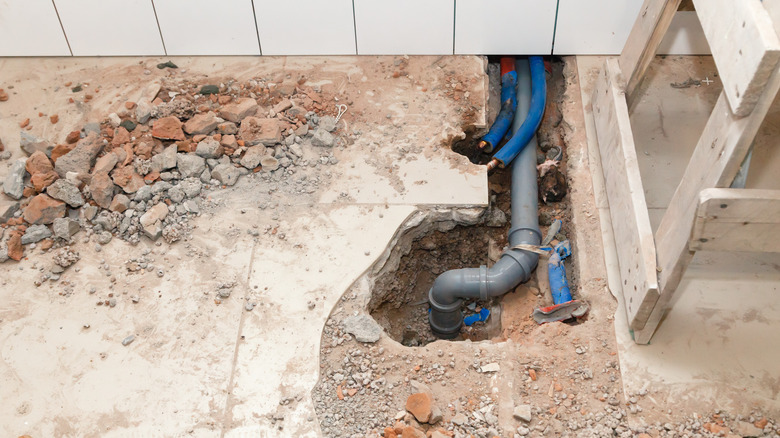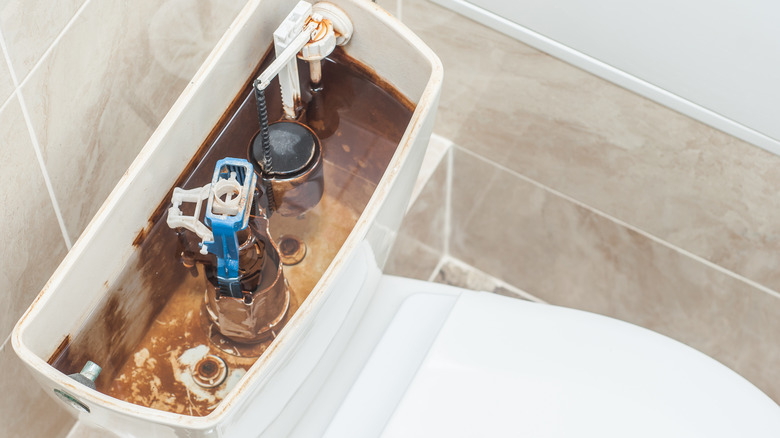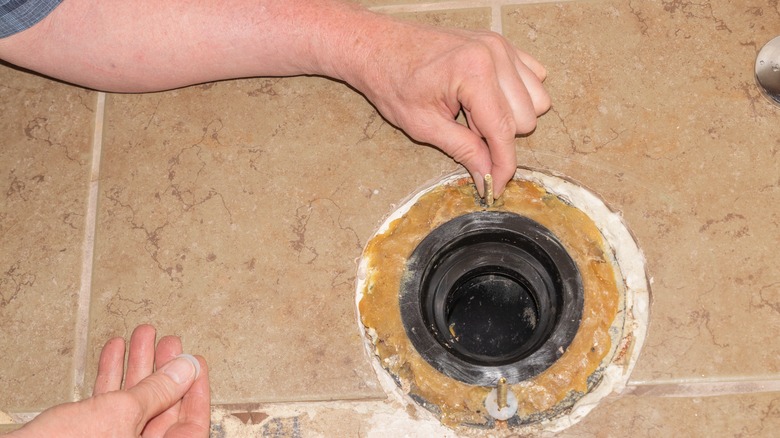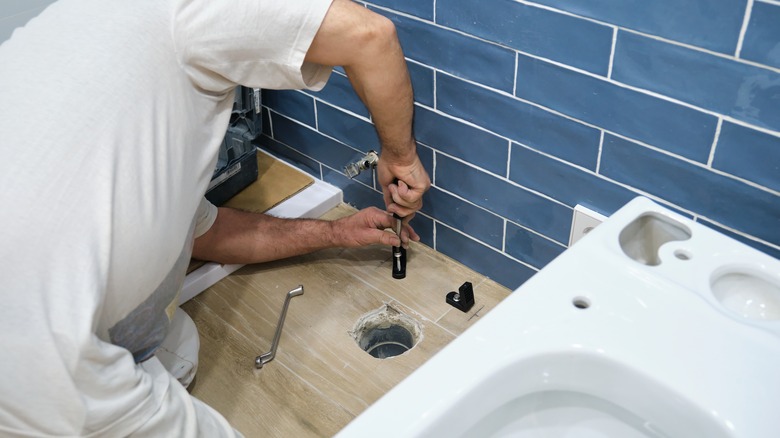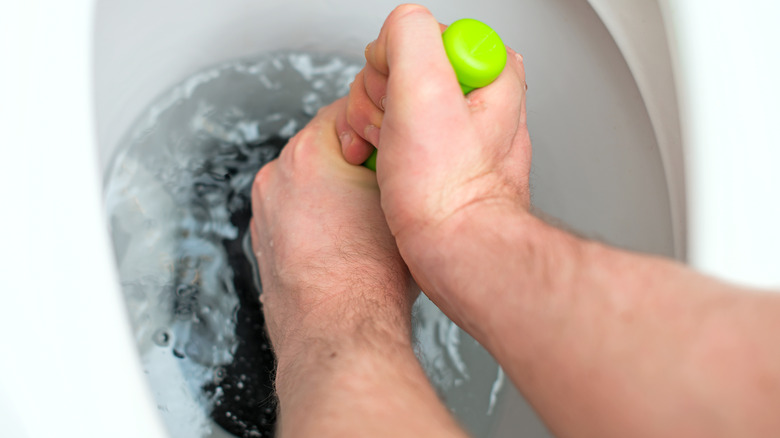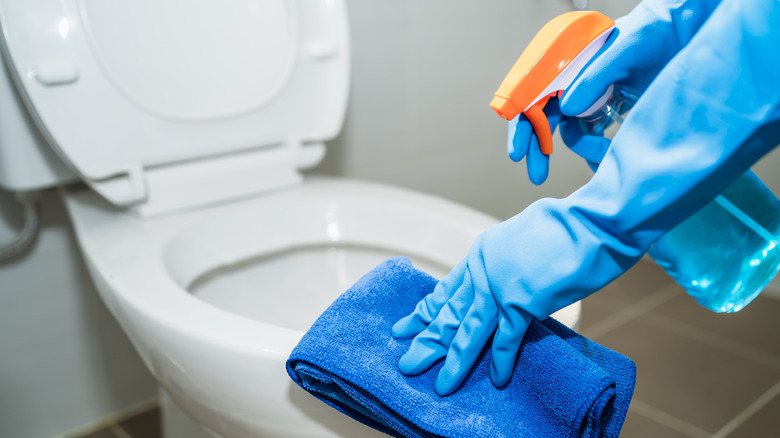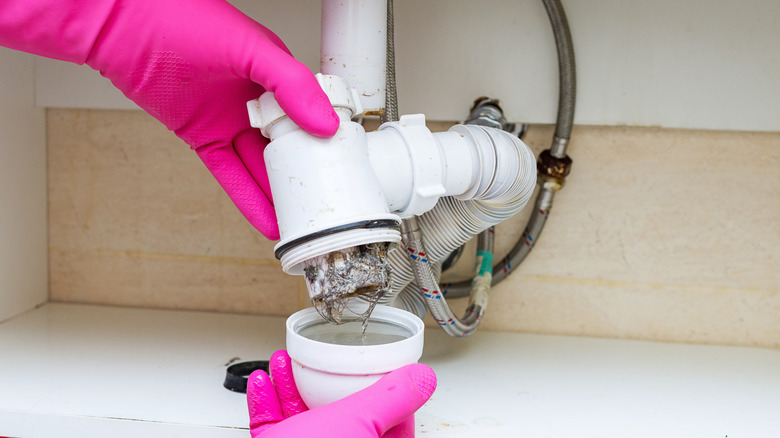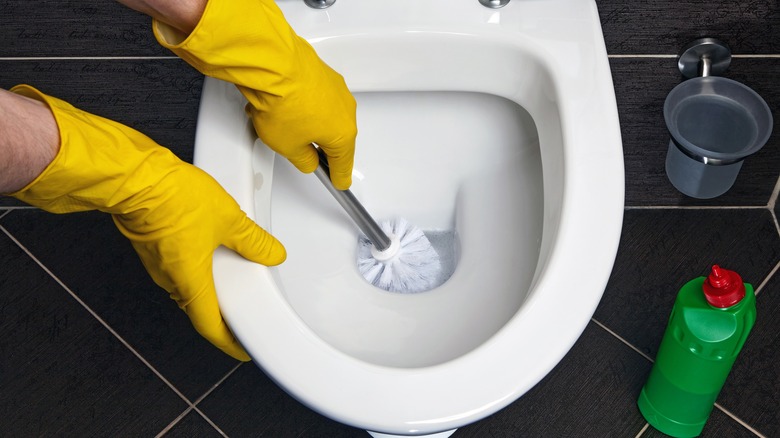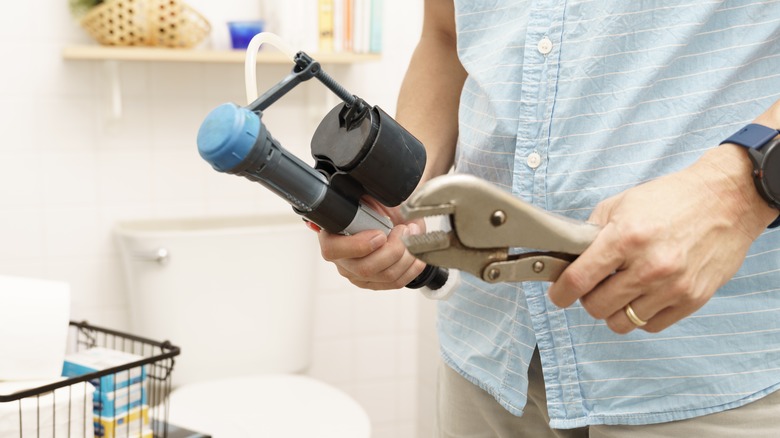Reasons Why Your Toilet Constantly Smells Bad (And What To Do About It)
While a toilet is a household staple in almost every home in the United States, the ongoing fight against its bad smells can be frustrating. It's common to take on these issues with solutions focusing on temporary fixes instead of addressing the core cause. You want to get to the root of the problem with pesky odors and consider the overlooked or unexpected reasons why they don't go away despite your best efforts. From hidden causes like biofilm buildup in the pipe walls to a broken-down wax seal, each potential cause contributes to the lingering odor.
Unlike a lot of advice that skims the surface of this problem, you want to figure out how these problems last and how to get rid of them. Understanding that some things you try might not work is critical as well. For example, misusing certain cleaning chemicals can make the smell worse, and not having good ventilation in your bathroom turns it into a space for mold to grow. You need actionable solutions to address these issues, and by focusing on them, you can permanently get rid of odors instead of just masking them.
Poor ventilation
If your bathroom lacks good ventilation, this is a common issue that causes unpleasant odors. When bathrooms don't have adequate ventilation, odors and moisture from showers, toilet use, and sinks get trapped in the room. This stagnant air creates the perfect environment for mildew to thrive, boosting the smell. Also, no fresh air circulating lets bacteria grow on different surfaces, like walls, towels, and the toilet. A 2021 study by the National Library of Medicine showed that public bathrooms with poor ventilation were five times as likely to contract an infection due to bacteria. Also, these bacteria produce foul gases, building up and intensifying any odors in the bathroom.
To reduce any foul smells coming from your bathroom, you have to put measures in place that increase air circulation and reduce humidity levels. The Environmental Protection Agency (EPA) recommends reducing indoor humidity to 30 and 60%, where possible. To do so, install a high-quality exhaust fan that you run during and 20 to 30 minutes after you shower. One of the most significant benefits of a bathroom exhaust fan is that it quickly removes the moist air. For bathrooms with windows, open them regularly to let fresh air in and dilute any stagnant, stale air. Consider adding a dehumidifier to the space to lower humidity and discourage mildew growth.
Blocked vent pipe
The vent pipe works to regulate the air pressure inside your pipes and let the sewer gasses safely escape from the house. This vertical pipe runs from the drain system to the outside, usually through the roof. However, external debris can block it, including twigs, leaves, and bird nests, especially in areas with a lot of wildlife or foliage. When it gets blocked, it disrupts or stops the normal airflow through your plumbing system, stopping the gasses from escaping. Instead of getting vented outside, they get forced back into the pipes and the bathroom, leading to an odor. Also, disrupting the plumbing's venting system impacts how well your water drains, leading to gurgling noises from the toilet and drains.
Cleaning the blockage in the vent pipe will restore the venting process for the sewer gasses and get rid of the smell. The first thing to do is look at the vent opening, either on the ground or from the roof, and look for a visible blockage. If you see visible blockages, carefully remove them with your hand or a plumber's snake. You may need a professional for blockages that are further into the system. Plumbers have specialized tools and equipment, like high-pressure water jets and motorized augers, that clear obstructions without causing damage. A plumber can also inspect the vent pipe to ensure no hidden issues are causing a blockage, like structural damage.
Dry P-trap
The P-trap is essential to your plumbing fixtures, especially showers, sinks, and toilets, because it helps keep your bathroom odor-free and healthier. This U-shaped pipe is designed to keep a small amount of water trapped at all times. This trapped water creates a natural barrier to stop odors or sewer gasses from coming up through the plumbing system into your home. However, if you don't use a particular bathroom fixture a lot, like a guest bathroom, the water will slowly evaporate. Without the water barrier, odors from decomposing waste in the sewer rise through the pipes. This odor will fill your bathroom, and you won't be able to remove it by routine surface cleaning.
Set up an effective but straightforward maintenance routine to prevent your P-trap from drying, especially for any plumbing fixtures you don't use daily. Run water in toilets, showers, or sinks you don't use often, and this will keep water in the P-trap. Routinely replenish the water barrier to keep the sewer gasses out of your home. Legault-Dubois Inspection Management recommends pouring a small amount of mineral oil into the drain for more protection. The oil will evaporate slower than water, reducing how quickly the water evaporates. This is useful in homes with lower humidity levels or vacation homes where people are away for weeks or months to use the water.
Sewer line problems
Sewer line issues, especially leaks or cracks, are a considerable risk to your home's comfort and hygiene. These cracks or leaks allow sewer gasses to escape; they are health hazards and smell unpleasant. Sewer lines are supposed to be airtight except for the vent stacks that let gasses safely escape through the roof. However, when there are loose connections, breaks, or cracks, the gasses enter your home and can cause a lingering odor that smells like sewage or rotten eggs. Smelling these odors tells you that your sewer system's integrity is compromised, allowing methane and other harmful gasses in. To make it more challenging, these problems may not be visible as they could happen in the pipes leading away from the deep underground homes. Simple wear and tear is a significant cause, as are tree roots growing into the sewer system pipes.
Fixing any sewer line issues requires you to hire a professional due to the possible health risks and the complexity of the project. If you think the bad smell is due to faulty sewer lines, contact a qualified plumber specializing in sewer repair services. They have the knowledge and tools to do a thorough inspection using cameras and other equipment to find the exact location and cause of the problem. Once they pinpoint the problem, they'll recommend a fix, and this could be anything from repairing only the damaged portion to replacing the whole thing.
Buildup in the toilet tank
This toilet tank is responsible for keeping the toilet constantly moist, but it can become a breeding ground for bacteria. These microorganisms love the dampness inside your toilet tank, feeding on any mineral deposits and organic matter that slowly build up. As they grow, the bacteria colonies start producing bad smells, and you'll notice them in both bathrooms you frequently use and ones that sit unused. The smell will be very earthy and musty, depending on how many and the types of bacteria you find growing. It also goes beyond smelling bad, as some bacteria threaten your health.
To fight bacteria growth in this area, set up a regular cleaning routine using a simple and safe mixture of ordinary water and vinegar. Vinegar has natural disinfectant properties, and it's a versatile cleaning tool that can kill many bacterium types. To clean your toilet tank, turn off the water supply and flush the toilet to drain the tank. Fill the tank with a 50:50 mixture of vinegar and water, ensuring you add enough to cover any visible buildup or stains. Leave it in the tank for several hours or overnight. Scrub the inside of the tank with a brush to eliminate any lingering spots. Turn the water supply back on and flush the toilet a few times to rinse the vinegar and water solution.
Worn wax seal
The wax seal is under your toilet and plays a massive role in keeping your bathroom odor-free and sanitary. It creates a gas and water-tight seal between the drainpipe and toilet base. Over time, this wax seal will break down due to regular wear and tear, toilet position shifts, or temperature fluctuations. It won't work correctly as it deteriorates, and sewer gas and water can leak into your bathroom. Water leaks damage the bathroom floor while causing rot, and sewer gas leaks allow odors and potentially harmful gasses into the bathroom. Wax seal issues are common problems with older bathrooms or ones that get a lot of use.
Fixing a worn wax seal is a project for which you'll need expertise. The solution is to replace the old wax seal with a new one, and you have to remove the toilet to get to the seal underneath the base. So, it's common to turn off the water supply, drain the toilet, unscrew it from the floor, and carefully lift it away. Once you remove the old seal, clean the area thoroughly before putting the new wax seal on. It has to have a tight fit to safeguard against water leaks or odor issues. Since this is such a labor-intensive process, many people hire plumbers because it lowers the risks of damaging anything or installing it incorrectly.
The toilet flange is too low
The toilet flange is an essential part of the toilet installation process, and it is the interface between the sewage drain pipe and the toilet base. You need a gas and water-tight seal to prevent leaks and block any escaping sewer gases from getting into your bathroom. However, if the flange gets installed too low compared to the floor level, this compromises the seal. This is a common problem with bathroom remodels when people try to cut costs or take shortcuts and install flooring themselves, not accounting for the extra height. If the flange is too low, it can't connect with the toilet, leading to small gaps. This allows unpleasant odors to escape, and there may also be minor water leaks that can compromise your flooring.
To fix a low toilet flange, install a flange extender. This extender is a device that fits right over your existing flange and raises the height to the correct level to get a secure seal. This simple fix removes the need for extensive plumbing modifications, and it comes with its own set of seals and screws to ensure you get a gas and water-tight connection. This prevents odors from escaping. To install it, clean your existing flange, apply a sealant as the packaging directs, and attach the extender using screws to secure it. Once it's in, put the toilet on top, ensuring the wax ring is in the correct position to seal it.
Clogged drains
Clogged drains are a common plumbing problem with enormous consequences for the bathroom's odor and cleanliness, especially in the toilet or the pipes running from it. Clogs happen when waste material, foreign objects, toilet paper, or wet wipes stop or slow the sewage flow through the pipe system. This clog can cause sewage to build up inside the pipes, preventing it from entering the sewage system as usual. As the sewage builds up, it decomposes and releases gasses that can seep into your bathroom. The smell is very unpleasant and indicates that you could have potentially harmful bacteria around that could negatively impact your health. A 2015 study published in the National Library of Medicine showed that clogs cause exposure to multi-resistant bacteria, leading to illnesses.
Regular maintenance is key to preventing or unclogging your drains. The best way to unclog your toilet right away is to use a plunger. For stubborn clogs, a drain auger or plumber's snake can get deeper into the pipes and break up or pull out an obstruction. You must use these tools correctly to avoid damaging the pipes or toilets. Setting up a cleaning routine and being careful with what you flush reduces your chances of clogs. Avoid flushing feminine hygiene products, wipes, and excessive toilet paper. Hiring a plumber may be necessary for persistent clogs or if you find yourself unclogging the pipes regularly.
Lack of regular cleaning
Not cleaning your bathroom areas regularly and neglecting to clean around the toilet allows mold, fungi, and bacteria to build up. Each of these items can create a lingering and strong odor. These microorganisms love the humidity and moisture in the bathroom, and bacteria can quickly multiply on any surface that has contact with human waste. Over time, these things create compounds that emit smells, which can be embarrassing if you can't eliminate them.
You'll need a consistent cleaning routine to reduce the chances of mold, fungi, and bacteria building up in the bathroom. Use bathroom cleaners specifically formulated to kill mold and bacteria, ensuring you wipe them out. Merry Maids suggests that when cleaning, pay close attention to hard-to-reach spaces you overlook, including behind the bowl, under the toilet bowl rim, the base where the toilet and floor meet, and crevices around the toilet seat. Use a scrub brush or a microfiber cloth to reach these spaces, applying a generous layer of the cleaning solution to treat every surface. Consider adding natural cleaning agents like baking soda or vinegar to help disinfect the area between regular cleanings.
Biofilm in the pipe walls
Biofilm is a buildup of microorganisms that stick to pipe surfaces, especially pipes with a lot of moisture and organic matter. This slimy layer comprises fungi and other microbes that embed into the slick, slimy layer. For household plumbing, this biofilm forms on pipes due to the constant supply of organic materials, including grease, food particles, soap scum, and human waste. As this biofilm builds up, it'll eventually decompose and release an unpleasant smell. Worse, the microorganisms can cause pipe corrosion, potential blockages, and lower water flow. Addressing biofilm-related issues is crucial for maintaining a clean and odor-free home environment and ensuring the longevity and efficiency of your plumbing systems.
To fight biofilm formation inside your pipes, use enzymatic drain cleaners for an eco-friendly solution. Experts recommend them for getting pet odors out of the house, but they also have specific enzymatic agents that break down the biofilm's organic components. It'll slowly break down the organic material, disrupt the biofilm's structure, and eliminate the microbial colonies. These are biodegradable, and you can use them in all types of plumbing without causing issues. Apply them according to the instructions on the package to ensure the enzymes have enough time to work on the biofilm and break it down.
The toilet brush holder and brush are dirty
A dirty toilet brush holder and brush are widespread sources of odors. This receptacle can quickly become a breeding ground for nasty microorganisms if it isn't cleaned regularly. Each time you use the toilet brush and return it to this holder without cleaning it, organic matter and leftover water from the toilet build up in the bottom. Microorganisms will grow and thrive, causing odors. Along with spreading odors, they spread germs around your bathroom, which can get worse quickly due to humidity.
Start by cleaning your toilet brush with hot water and a disinfectant cleaner or bleach each time you use it to kill viruses or microorganisms. For the holder, use a bleach-based solution to eliminate odors and germs. Rinse the holder and toilet brush thoroughly after you clean it to wash away any cleaner residue. Allowing the brush to dry completely before you put it back into the holder will also help prevent unwanted microorganism growth. You can shake off the excess water and put the brush under the toilet seat, letting it air dry over the bowl before putting it back into the holder.
Faulty toilet components
Over time, your toilet's components, like the fill valve and flapper, can wear out or break due to material breakdown and regular use. The flapper creates a seal for the toilet tank's drain, and it can lose its integrity. When it does, water will constantly leak from the tank down the bowl. If the fill valve breaks or malfunctions, your toilet tank won't fill with the correct amount of water after each flush. These issues cause you to waste water and increase utility bills, but they can also make the bathroom more humid. A higher humidity level encourages mold and mildew growth, leading to odors. Being constantly wet also makes your other toilet components or the surrounding areas deteriorate faster.
Figuring out which components are faulty and replacing them can be a DIY project that doesn't necessarily require a plumber's help. You can get these parts at your local hardware store, and they have instructions that outline the installation process. The first step is to look at the toilet and determine which part isn't working by checking for constant water flow or listening for water running when you're not using the toilet. Once you narrow down the part, turn off the water supply to the toilet and drain the tank to replace the component safely. Also, there are online tutorials and guides you can follow if you're not sure how to fix the part.
